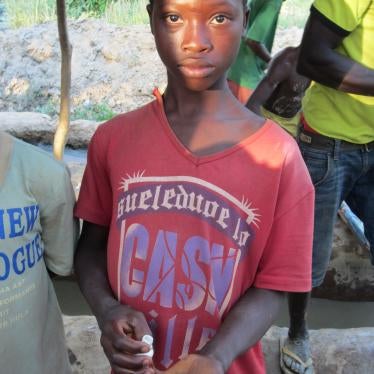This week in Geneva, delegations from around the world – including Canada – will meet for the first time to discuss how to put into effect the Minamata Convention, a global treaty to protect human health and the environment from mercury. The meeting’s theme is “make mercury history” – ambitious but appropriate given mercury’s extreme toxicity.
Residents of Grassy Narrows and Wabaseemoong (Whitedog), two First Nations communities along the English-Wabigoon River in northwestern Ontario, have borne the brunt of toxic mercury contamination like no one else in Canada. About 10 tonnes were dumped into the river by a chemical plant upstream in the 1960s and early 1970s.
So far there are no indications that Canada considers its ratification of the mercury convention as requiring a different approach to Grassy Narrows and Whitedog. Canada’s formal statementon measures to comply with the convention fails to mention either community.
According to Japanese researchers, 90 per cent of residents tested in these communities in 2014 exhibit some symptoms of Minamata disease. Minamata disease is a neurodegenerative disorder caused by poisoning by a mercury compound. Japanese doctors working in the Japanese fishing town of Minamata, where mercury was discharged into the bay by a large chemical company from 1932 until 1968, first identified the condition.
In Grassy Narrows, where I interviewed residents recently, Darwin Fobister has many of the common symptoms of mercury poisoning, a legacy of the pollution that hasn’t been addressed for more than 40 years. Although he’s just 20, he has difficulty with balance, trembling in his hands and spells of tunnel vision. He says he has trouble remembering things and strong migraines. “The process [of mercury poisoning] is going on and on and it’s passing to younger and younger people,” he told me. “It’s not getting better, not at all.”
Under the mercury convention, parties “shall endeavour” to take action on mercury contaminated sites. Canada maintains that all of Canada’s chlor-alkali facilities – the industrial process originally responsible for the pollution in the English-Wabigoon River – “have all been safely decommissioned” and all mercury waste sent for appropriate treatment.
But a report released earlier this year strongly suggests that the site of the old chlor-alkali plant upstream from Grassy Narrows and Whitedog is still leaking mercury into the river system, a finding that prompted the Ontario government to announce it was “completely committed” to a thorough cleanup of mercury in the river system – and a dedicated fund.
The Prime Minister’s Office announced that it would tackle the mercury contamination “once and for all.” Prime Minister Justin Trudeau has since claimed that it is a provincial issue, but Canada’s federal government can’t pass all responsibility to Ontario. Some of the contamination is on First Nations reserves, a federal responsibility. Fisheries are also squarely under federal jurisdiction and even today, fish in the English-Wabigoon River have the highest mercury concentrations in Ontario.
While the Minamata Convention does not require countries to take general health measures, it promotes “appropriate health-care services for prevention, treatment and care for populations affected by the exposure to mercury.”
The health care needs in Grassy Narrows and Whitedog are pressing and the federal government has existing international obligations to respect, protect and fulfill the right to health under the International Convention on Economic, Social and Cultural Rights.
The current level of federal health support on these reserves – a small clinic staffed by nurses and visited periodically by a doctor – is the same as for most other First Nation reserves in Canada and inadequate to address the multiple physical and mental health impacts of chronic mercury poisoning. In particular, children – who are struggling to learn – and people who are aging with the effects of mercury need better support. Activists in Grassy Narrows have called for a “mercury home” on the reserve – which would allow people affected by mercury to receive specialized care and support close to their community.
There’s a clear need to overhaul the Mercury Disability Board, a system of compensation set up by the federal and provincial governments in 1985 for these communities. Japanese researchers who have been visiting the area since 1975 have diagnosed many people with actual or suspected Minamata disease but only a fraction of these people are officially approved for compensation.
Judy da Silva is an Indigenous community leader in Grassy Narrows who has been fighting for a cleanup of the river system for decades. As she put it to me, “A cleanup [of the river] would be a new beginning. It would help our health and also help our community to see a brighter future. Now we are used to the darkness.”
Canada’s response to the ongoing mercury crisis in Grassy Narrows and Whitedog has been woefully inadequate. Grassy Narrows and Whitedog’s residents show just how much is at stake in the global push to eliminate mercury. As the world embarks on a new global regime to end mercury and its pernicious health effects, Canada’s federal government shouldn’t leave them behind.
Richard Pearshouse is associate environment and human rights director at Human Rights Watch










